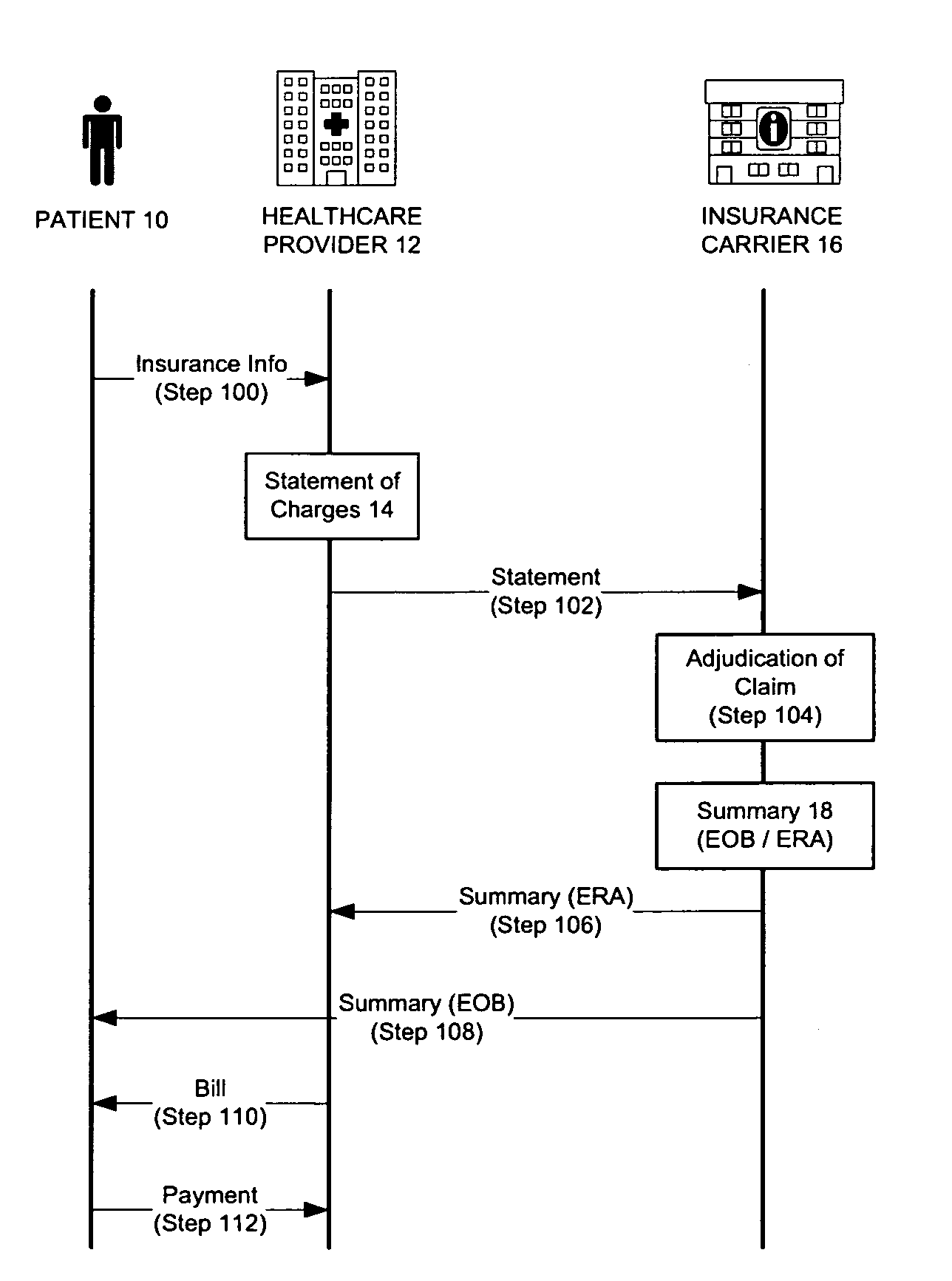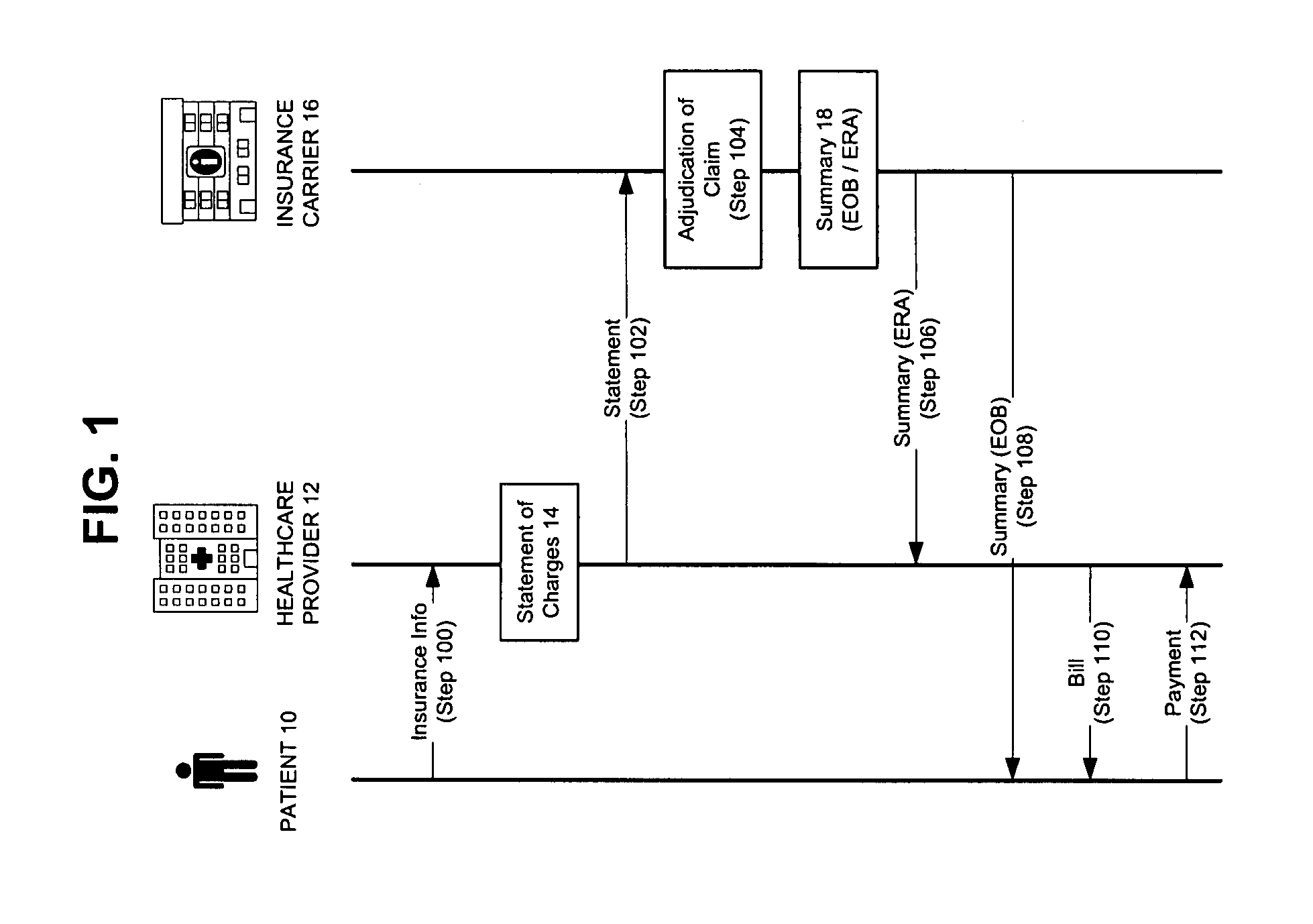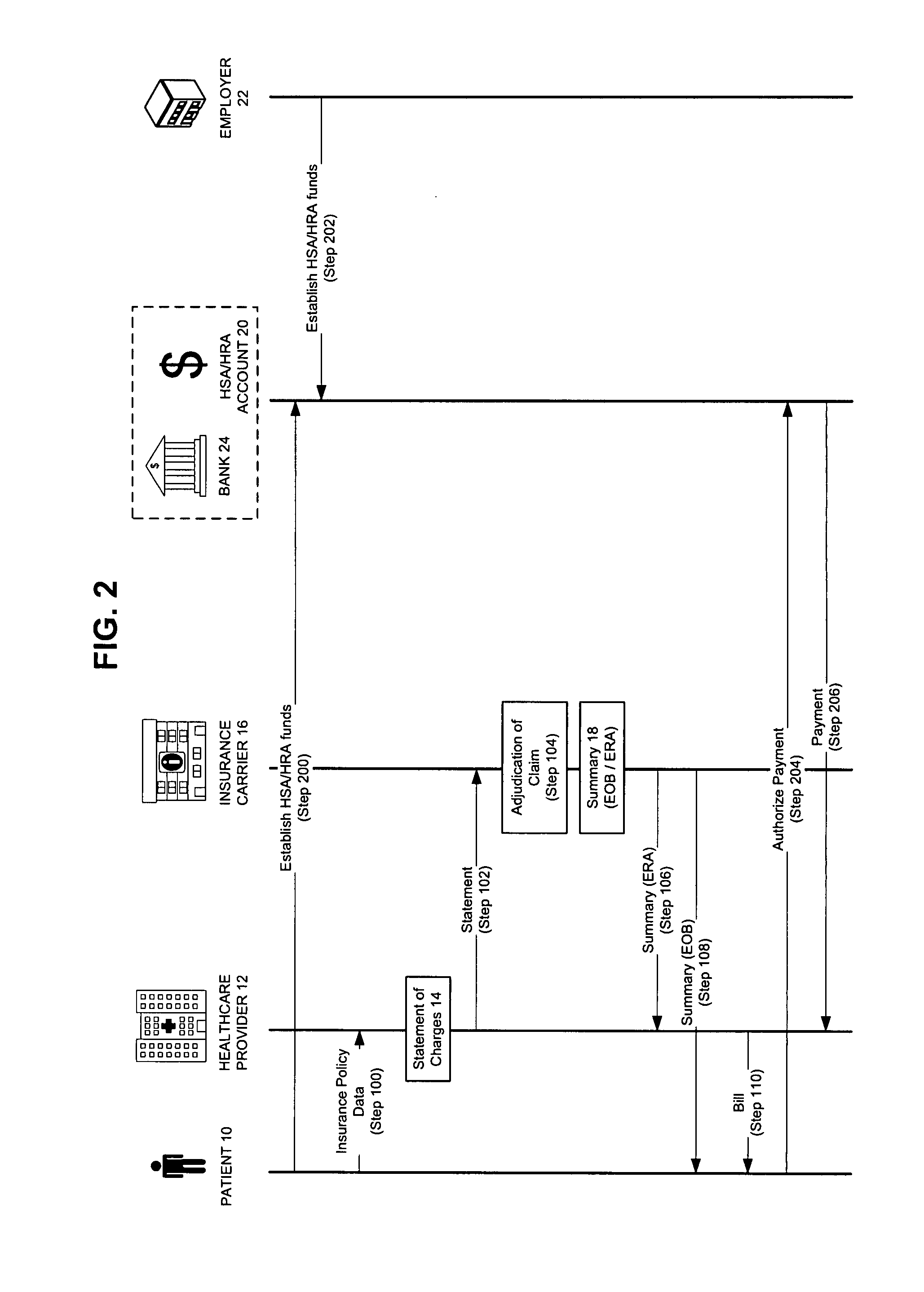Method and system for billing and payment for medical services
- Summary
- Abstract
- Description
- Claims
- Application Information
AI Technical Summary
Benefits of technology
Problems solved by technology
Method used
Image
Examples
first embodiment
[0044]This first embodiment of the inventive system and method calls for the healthcard 26 to be swiped in a standard charge / debit card reader. Alternatively, the data in the healthcard 26 may be presented and read by other means, such as by an RFID system. Utilizing routing data embedded in the healthcard 26, the card reader transmits data from the healthcard 26 to a transaction processor 28 that is part of a network, such as the Internet (Step 304). The transaction processor 26 will then await further transactional data from the insurance carrier 16. This puts the transaction-in-progress essentially in a virtual queue. At or near the same time, the statement of charges 14 as billed by the healthcare provider 12 may be sent to the insurance carrier 16 (Step 306). The statement of charges 14 may also contain all or part of the data obtained from the healthcard 26.
[0045]The insurance carrier 16 then adjudicates the claim and provides a summary 18 of its actions, for example as an ERA...
second embodiment
[0048]Turning to FIG. 4, a variation on the inventive concept is provided. Again, steps or entities described with respect to FIG. 3 are duplicated here in FIG. 4 using the same step designations. However, this second embodiment of the inventive system and process contemplates that, as in FIG. 3, data embedded in the healthcard 26 is transmitted to the insurance carrier 16 by the healthcare provider 12 at Step 306 as part of the statement 14, but unlike FIG. 3, the healthcard 26 data of FIG. 4 is not also transmitted to the transaction processor 28, as was accomplished in step 304 of FIG. 3. When the insurance carrier 16 adjudicates the claim at step 308, the insurance carrier 16 may then transmit merged data to the transaction processor 28 (Step 400). The merged data may consist of some or all of the healthcard 26 data received at step 306 and some or all of the summary 18. The transaction processor 28 may then issue a debit to the HSA account (Step 314), and so forth in the manner...
third embodiment
[0049]In FIG. 5, the system and method of the invention contemplates that the healthcare provider 12 does not transmit the healthcard 26 data to the insurance carrier 16 or the transaction processor as part of step 306 or step 304, but rather the healthcare provider 12 (or the card reader possessed by the healthcare provider 12) may transfer the healthcard 26 data to a computer system 32 (“HCP system”) under the control of the healthcare provider 12 (Step 500). The HCP system 32 may or may not transfer the data to a transaction processor 28 (step 502) before the claim to which it applies is adjudicated by the insurance carrier 16 to whom it is billed. With a merging node now at the point of the healthcare provider 12, the insurance carrier's 16 summary may now be sent to the healthcare provider 12, where it may then be merged with the patient's healthcard 26 data in manner as previously described, and then sent to the transaction processor 28. Steps 314 and 316 then follow, as in th...
PUM
 Login to View More
Login to View More Abstract
Description
Claims
Application Information
 Login to View More
Login to View More - R&D
- Intellectual Property
- Life Sciences
- Materials
- Tech Scout
- Unparalleled Data Quality
- Higher Quality Content
- 60% Fewer Hallucinations
Browse by: Latest US Patents, China's latest patents, Technical Efficacy Thesaurus, Application Domain, Technology Topic, Popular Technical Reports.
© 2025 PatSnap. All rights reserved.Legal|Privacy policy|Modern Slavery Act Transparency Statement|Sitemap|About US| Contact US: help@patsnap.com



